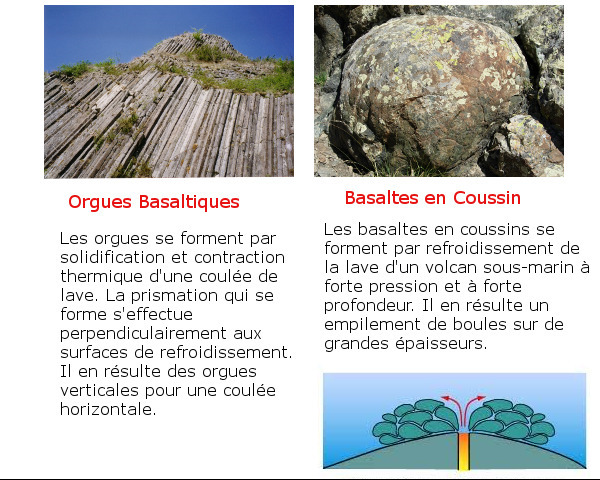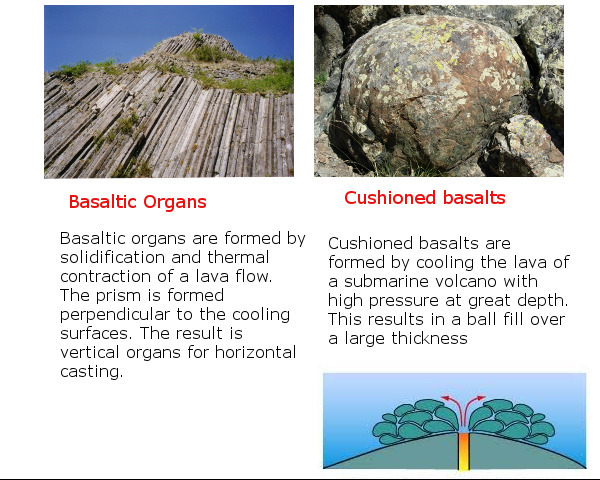Géologie au Chenaillet #1 : Basaltes
Le Chenaillet est une relique d'un ancien océan qui s'est formé il y a 155 millions d'années, et qui a disparu lors de la formation des Alpes.
La série de earth cache (Basaltes - Géodrome - Lecture de Paysage - Radiolarite - Gabbros ) suit un itinéraire qui permet de mettre en scène le l'histoire de la formation des Alpes. Les observations et les explications seront simplifiées, mais fidèles. Au-delà de la richesse du patrimoine géologique, il s'agit d'une aussi belle randonnée qui peut être poursuivit jusqu'au commet du Chenaillet et sa vue panoramique.
------------------------------------------------------------ BASALTES ------------------------------------------------------
Le basalte est une roche très répandue : il est issu de la fusion du manteau (sous la croûte terrestre) qui s’épanche facilement (magma basique et fluide) au niveau des dorsales océaniques, ou lors de volcanisme « aérien ».
Il prend parfois la forme de typiques colonnes prismatiques hexagonales lorsque la lave refroidit lentement et régulièrement, appelées orgues basltiques, ou bien de coulées plus ou moins horizontales telles une étendue de coussins, dites pillow lava ou basaltes en coussin, liées à un refroidissement rapide en mer.

Au Waypoint vous êtes face à un affleurement de baslates au dessus de chemin.
1) S'agit il de basaltes en coussin ou de d'orgues basaltique ? Quelles sont leur taille moyenne ?
2) Qu'est ce que cela implique sur l'histoire de ce lieu ?
3) En dessous du chemin, un autre phénomène géologique dû à l'érosion est visible, quel est-il ?
Optionnel mais apprécié : Prenez-vous en photo ou votre GPS qui domine la vallée de Montgenèvre.
"Loguez cette cache "Found it" et envoyez-moi vos propositions de réponses soit via mon profil, soit via la messagerie geocaching.com (Message Center), et je vous contacterai en cas de problème."
------------------------------------------------------------------------------------------------------------------------------------
Geology in Chenaillet # 1: Basalts
The Chenaillet is a relic of an ancient ocean that was formed 155 million years ago, and which disappeared during the formation of the Alps.
The series of earth cache (Basaltes - Géodrome - Reading Landscape - Radiolarite - Gabbros) follows an itinerary that allows to stage the history of the formation of the Alps. Observations and explanations will be simplified but faithful. Beyond the rich geological heritage, this is such a beautiful hike that can be continued until the commet du Chenaillet and its panoramic view.
---------------------------------------------------- BASALTS ------------------------------------------------------
Basalt is a very widespread rock: it is the result of the melting of the mantle (under the earth's crust), which is easy to diffuse (basic and fluid magma) at the level of oceanic ridges, or during "aerial" volcanism.
It sometimes takes the form of typical hexagonal prismatic columns when the lava cools slowly and regularly, called basltic organs, or more or less horizontal flows, such as cushions, pillow lava or basalts cushions, linked to rapid cooling in sea.

At Waypoint you are facing an outcrop of baslates above the path.
1) Is it basalt cushion or basalt organ? What are their average size?
2) What does this imply about the history of this place?
3) Below the path, another geological phenomenon due to erosion is visible, what is it?
Optional but appreciated: Take a picture or your GPS that dominates the valley of Montgenèvre.
"Log in this" Found it "cache and send me your responses either via my profile or via the geocaching.com messaging service, and I'll contact you if there's a problem."